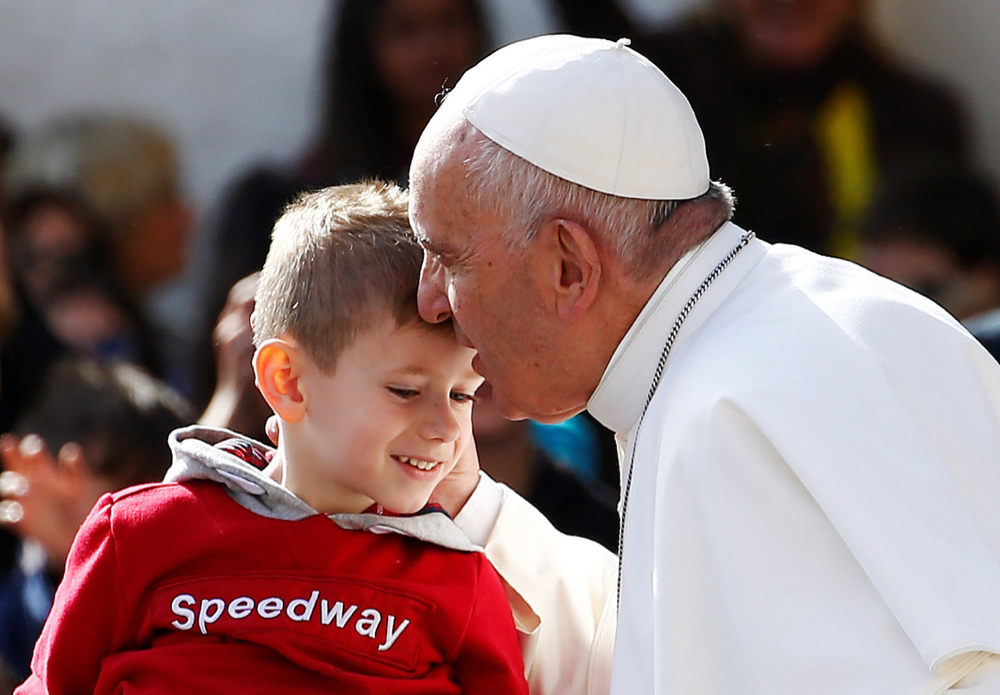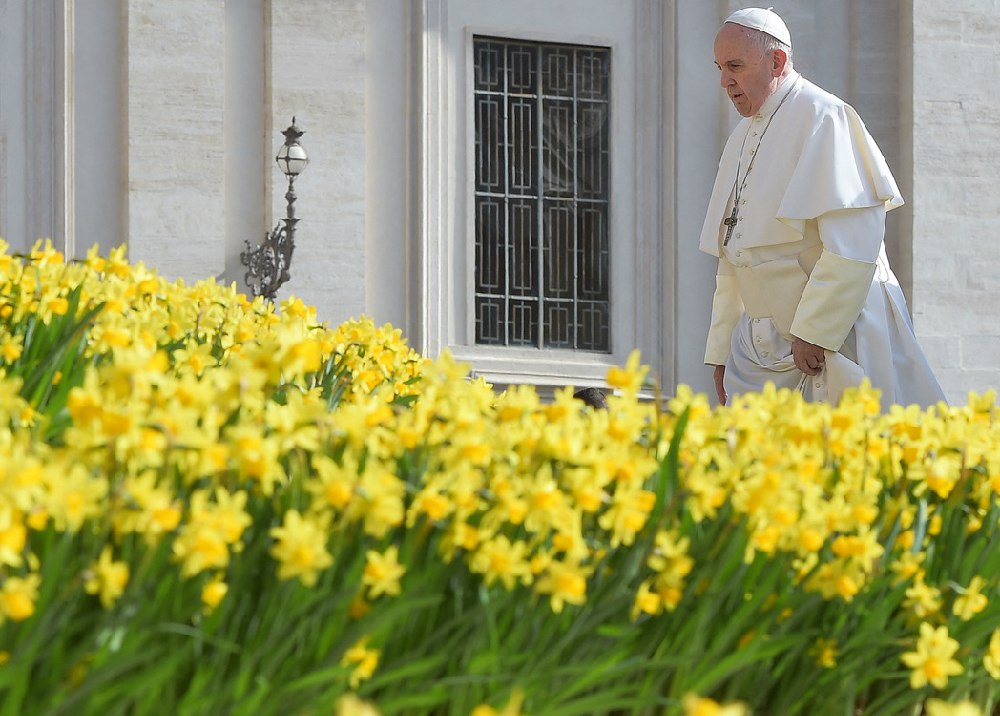The opponents of Pope Francis, be they inside or outside of the Church, are pinning their hopes on a future conclave.
“There are people who simply don’t like this pontificate,” Cardinal Walter Kasper told the German State broadcaster ARD earlier this year. “They want it to end as soon as possible to then have, so to say, a new conclave. They also want it to go in their favour, so it will have a result that suits their ideas.”
But if a new book on the election that chose this Pope is anything to go by, the anti-Francis groups are facing an uphill struggle.
In “The Election of Pope Francis”, Gerard O’Connell offers a synoptic account of the 2013 conclave, giving readers a ringside seat on the drama that followed Benedict XVI’s resignation and the emergence of the first Latin American Pope.
Drawing on interviews with cardinal electors, America Magazine’s experienced Vatican correspondent sets out how and why the votes were cast for Cardinal Jorge Bergoglio.
Although all this took place six years ago, the book offers three insights into the politics of papal elections that remain valid today.
The first is the inevitable failure of anyone who runs an overt campaign for the papacy – or allows for a campaign to be undertaken on their behalf.
Cardinals see through them, and resist them, and even more so if they are well-funded and co-ordinated with the media. These campaigns are viewed as an interference in the discernment process that takes place in a conclave and where electors are required to be open to the Holy Spirit which “blows where it wishes”.
The same is true for prelates who push themselves into the limelight in the years before a conclave with books, tweets, and interviews offering a “parallel papacy”.
They are unlikely to get many votes from their fellow cardinals when they line up to cast their ballots in front of Michelangelo’s daunting fresco, Last Judgment.
The allergy to campaigns is linked to that old adage which states: “He who enters a conclave a Pope leaves a cardinal.”
While that saying remains true, it has been challenged by at least two conclaves over the last decades including in 1963, when Cardinal Giovanni Montini was elected Paul VI, and in 2005 with the choice of Cardinal Joseph Ratzinger as Benedict XVI.
Both these candidates were the front runners, and both were chosen because they stood head and shoulders above the rest.
For the 2013 conclave, however, O’Connell demonstrates that the Bergoglio candidacy for the papacy stayed under the radar, and he only emerged as a candidate just before the election. He also states categorically that there was no orchestrated campaign by "Team Bergoglio".
The Archbishop of Buenos Aires, the book explains, phoned the author to explain he was planning to arrive in Rome on March 3 or 4, less than ten days before the conclave would start. Although he later brought forward his time of arrival, this was hardly the actions of someone expecting to be elected.
At the time of the last conclave, Bergoglio was 76 and past the episcopal retirement age; he didn’t have a network in Rome lobbying for his candidacy and the progressive bloc of cardinals known as the Sankt Gallen group – which some say pushed for his election – had held its last meetings in 2006.
Yes, Bergoglio had garnered enough votes in the 2005 election to block Ratzinger’s election, but by 2013 he was not seen as a front runner.
O'Connell reports how there was little agreement among the cardinals over who should be elected right up until the last days before the conclave. It was only gradually that they began to recognise the man who would become Pope Francis was standing in their midst.
The game-changer was a speech on Saturday 9 March 2013 where the Archbishop of Buenos Aires electrified the cardinals with a speech calling on the Church to evangelise at the peripheries, and avoid the sickness of being self-referential. From that moment onwards he started to be taken seriously as a candidate.
Meanwhile, while Bergoglio only emerged into contention late on, the three hotly tipped candidates in 2013 gradually fell away, despite the various lobbying networks behind them.
The frontrunner six years ago was Cardinal Angelo Scola, who received 30 votes in the first ballot (Bergoglio got 26).
With support from “La Repubblica” newspaper and influential Catholic groups in Italy, the bishops of the country were so sure he had been chosen that they sent out a press release thanking God for the Milan prelate’s election as Bergoglio appeared on the balcony of St Peter’s.
But O’Connell explains that despite his many gifts, most cardinal electors felt that the scholarly Scola would have difficulty connecting with people.
Then there was Sao Paolo Cardinal Odilio Scherer. As a Latin American with pastoral qualities, he was seriously considered. But he was also the candidate of the Roman Curia and, in the view of one Italian cardinal, “risks being their puppet”. He then failed to impress when his speech during the pre-conclave meetings ran over the allotted time.
Another contender was Rome-based Cardinal Marc Ouellet, a multi-lingual theologian from Quebec who is Prefect of the Congregation for Bishops. A conservative group of cardinals thought he was their man, given his association with the "Communio" school of theology that was seen as a counterbalance to the more progressive theology of the post-Second Vatican Council era.
Ouellet was known as a kind man, but O'Connell explains that electors worried that he “doesn’t listen to what people say”, holds intransigent theological positions and has weak “managing skills”.
Then, on the eve of the conclave, Ouellet gave an interview to Canada’s major broadcaster where he talked about the possibility of becoming Pope. The electors felt this was poorly timed and showed a lack of judgment.
O’Connell points out that the last cardinal to give an eve of conclave interview was Cardinal Giuseppe Siri, the front runner to succeed John Paul I in 1978. He ended up as runner-up.
The second point from the book is how conclaves are designed to withstand external pressures, thanks to rulings from John Paul II and Benedict XVI.
Much of this is due to the long history of attempts to manipulate conclaves such as the time in 1903 when Austrian Emperor Franz Joseph used a veto in the election that chose Pope Pius X. Today, cardinals hand over their phones before entering the Sistine Chapel and are cut off from the world as they vote.
O’Connell reminds readers that before the 2013 conclave Mario Cuomo, the Former Governor of New York, gave an interview to Italy’s “Corriere della Sera” newspaper extolling the virtues of New York Cardinal Timothy Dolan for the papacy. He described him as “the right man for this extraordinary moment in history” who could “bring about a Vatican spring”.
This intervention went down badly, and the electors “did not like it one bit”, the book explains.
Imagine, then, what today’s cardinals must make of Steve Bannon’s criticism of Pope Francis and plan to commission ideological “gladiators” out of a former monastery 100 kilometres outside of Rome? The lobbying by the former chief strategist for US President Donald Trump makes Governor Cuomo’s intervention look tame, and is going to be strongly resisted.
The same can be said for the Red Hat Report, a group that is planning on spending more than a million US dollars to compile dossiers on cardinals to try and influence the next conclave.
When making their choices about papal candidates, O’Connell explains that the cardinals ignore lobby groups and seek out credible leaders who have experience of leading big dioceses.
“I think it is the local church with a strong Catholic faith that could produce the next Pope,” Indian Cardinal Telesphore Toppo said before the election of Francis. “The Pope should somehow represent the whole church, and he should have his roots in a truly unified local church.”
During his papacy, Francis has stacked the college of cardinals with bishops from far-flung corners of the world, many of them toiling away on the front lines of the Church's work. The field is now wide open when it comes to possible candidates.
The third takeaway from O’Connell’s book is the rule of continuity between papacies.
A recent attempt to set Benedict XVI against Francis over clerical sexual abuse is widely seen in Rome as a pre-conclave manoeuvre, designed to pave the way for a candidate prepared to break with this pontificate.
Yet both Benedict and Francis reject attempts to drive wedges between them, as do a majority of cardinal electors. There is no such thing as a “self-made” pontificate: each Pope builds on the ministry of his predecessor.
The rule of continuity is that the next Pope is unlikely to dramatically turn the clock back on Francis’ papacy, which has rooted itself in the reforms of the Second Vatican Council and the Church's living tradition.
That’s not to say the next Pope won’t bring anything new to the role: Francis and Benedict XVI are very different personalities with their own style and approach. But O’Connell’s book shows that their fates are intertwined that without Benedict's historic resignation in 2013, Bergoglio would never have been elected.
It can also be said that Francis ensured Ratzinger was elected. Without the Latin American Jesuit’s decision to renounced his claim on the papacy in 2005, the German cardinal would never have ascended to the Chair of St Peter.
A secret diary from a cardinal who took part in the 2005 election revealed how Bergoglio received 35 votes in that conclave, which was enough to block the election of Ratzinger.
O’Connell writes that several electors told him how the Argentine cardinal, sensing a prolonged conclave that would damage the unity of the Church, withdrew his candidacy. Eight years later, it was the dramatic decision of Benedict XVI to resign that opened up space for an outsider such as Bergoglio to be elected.
“The Election of Pope Francis” is worth reading simply for the anecdotes and insights drawn from the author’s closeness to the major figures from the 2013 conclave.
O’Connell reports on personal conversations he had with Bergoglio in the run-up to his election and gives insights into why the Jesuit archbishop from Buenos Aires had impressed the cardinals with his humble and austere lifestyle and closeness to the marginalised,
He explains how in Argentina Bergoglio had turned his predecessor’s stately office into a store room for food and clothes to be distributed to the poor while living in a simple one bedroom flat.
O'Connell also talks to the religious sister who runs the Domus Paulus VI, the clergy residence in Rome where Bergoglio stayed during the pre-conclave and later returned as Pope to pay the bill. One of her cleaning ladies said: “He [Francis] was the only priest who makes his own bed."
The Sunday before the conclave, when cardinals traditionally say Mass at their titular churches in Rome amid great media fanfare, the man who was about to be elected Pope Francis, decided to avoid the limelight and said Mass privately for a small group of friends in the chapel of the Domus.
He then had lunch with the 90-year-old sister of a former papal ambassador to Argentina, Ubaldo Calabresi, who had nominated him as a bishop and supported his ministry.
Two days later he entered the Sistine Chapel for the conclave, and on Wednesday 13th March 2013, after six rounds of voting received 85 votes from the 115 electors. He then stepped out to greet the world as the 266th Successor of St Peter.
The next conclave looks set to be an almighty battle, but the stage is set for another surprise.



 Loading ...
Loading ...